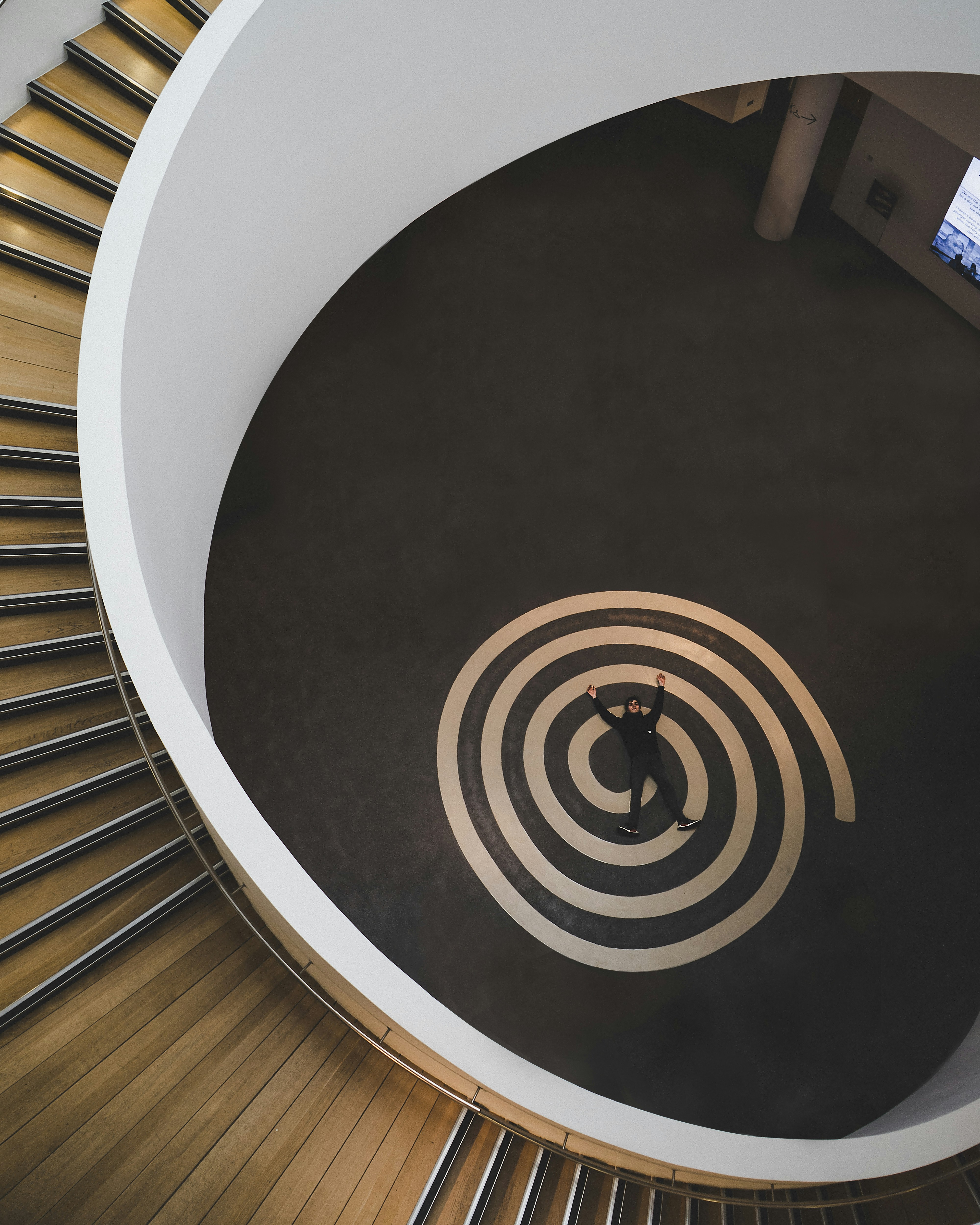When you use Great Photo Recipes links to buy products, the site may earn a commission.
What's The Recipe For This Great Photo?

Title: How to photograph Liverpool Museum has always been a great place to go, casually or even just to take a look inside. It has a huge curved staircase that looks huge compared to a normal human. I like this photo so much as it emphasises how much we can accomplish and the sheer size of how far we have come in architecture.; man laying on black floor
using the golden ratio. Position key elements along these lines or intersections. This creates visually appealing compositions with balanced proportions and natural flow. Use it to guide placement of subjects and focal points.
• aperture: 3.5 • exposure time: 1/80 • focal length: 28.0 • ISO: 400
High-end camera gear can be beneficial, but it's not essential. Here is equipment compatible with
SONY ILCE-7M2, that was used for the original photo:
From RAW to JPEG
Post-processing is indispensable for transforming raw pixels into
captivating, impactful photographs, enriching their storytelling and aesthetic allure.
Tools like
darktable (open-source) or
Lightroom
(commercial)
facilitate adjustments in
brightness,
contrast, and
color,
which
enhances visual appeal, corrects imperfections, and enables creative expression while optimizing photos for various outputs such as prints or social media.
Post-processing isn't a dark art for pro artists or geeks; it's a vital requirement for every image, regardless of its subject or content.

